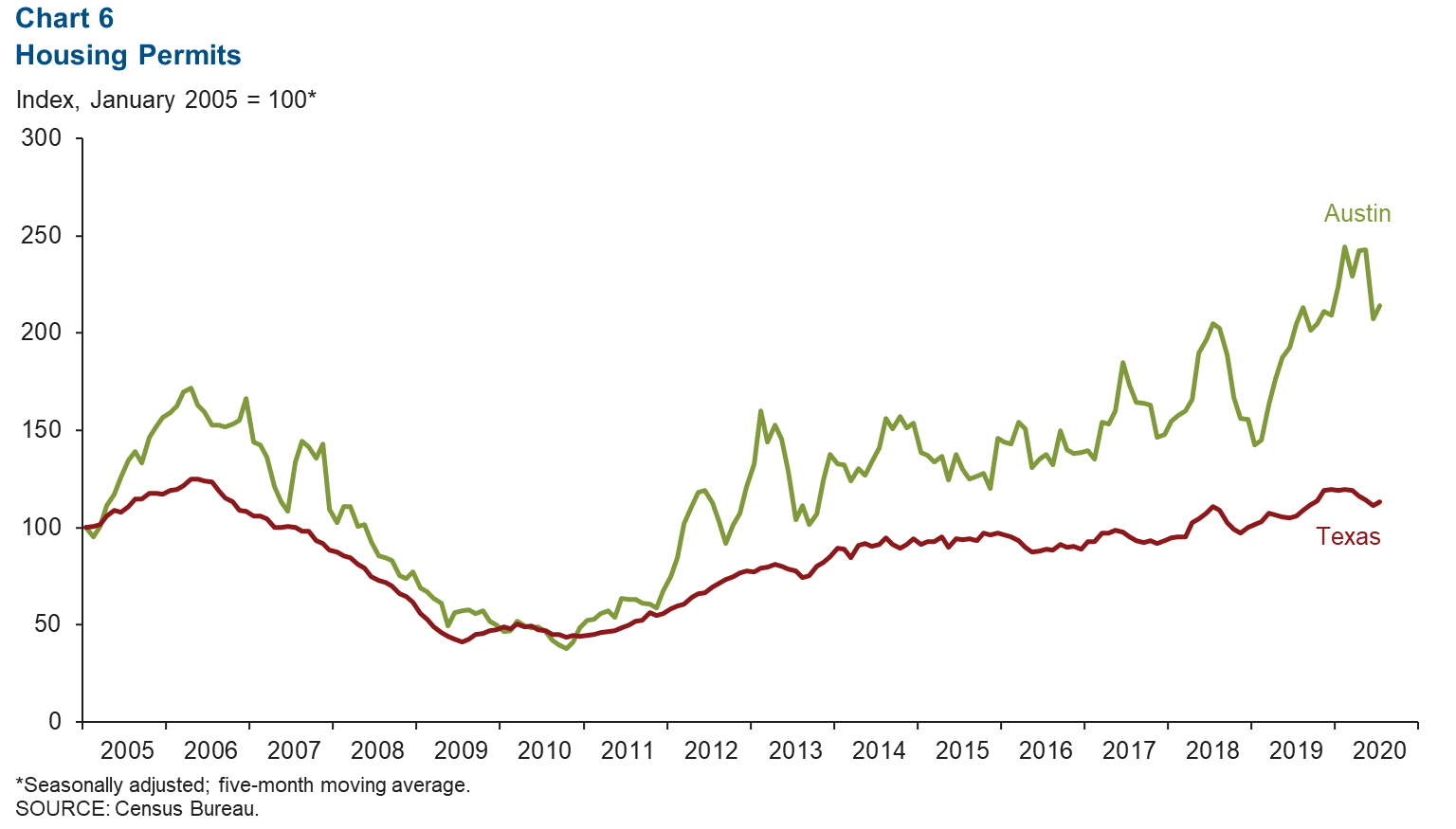
How Is The Austin Economy?
Staff
Austin — The Austin economy continued to improve in July. The Austin Business-Cycle Index expanded. Recent payrolls posted healthy gains, and while jobs and the unemployment rate improved in June and July, both remain significantly below their March levels.
Regional consumer spending since mid-July held at pre-COVID-19 levels. Existing-home sales remained strong, and building permits rebounded.
Business-Cycle Index
The Austin Business-Cycle Index—a broad measure of economic activity in the metro—increased for the second consecutive month at a nonannualized 1.2 percent in July, suggesting further improvement in the regional economy (Chart 1).
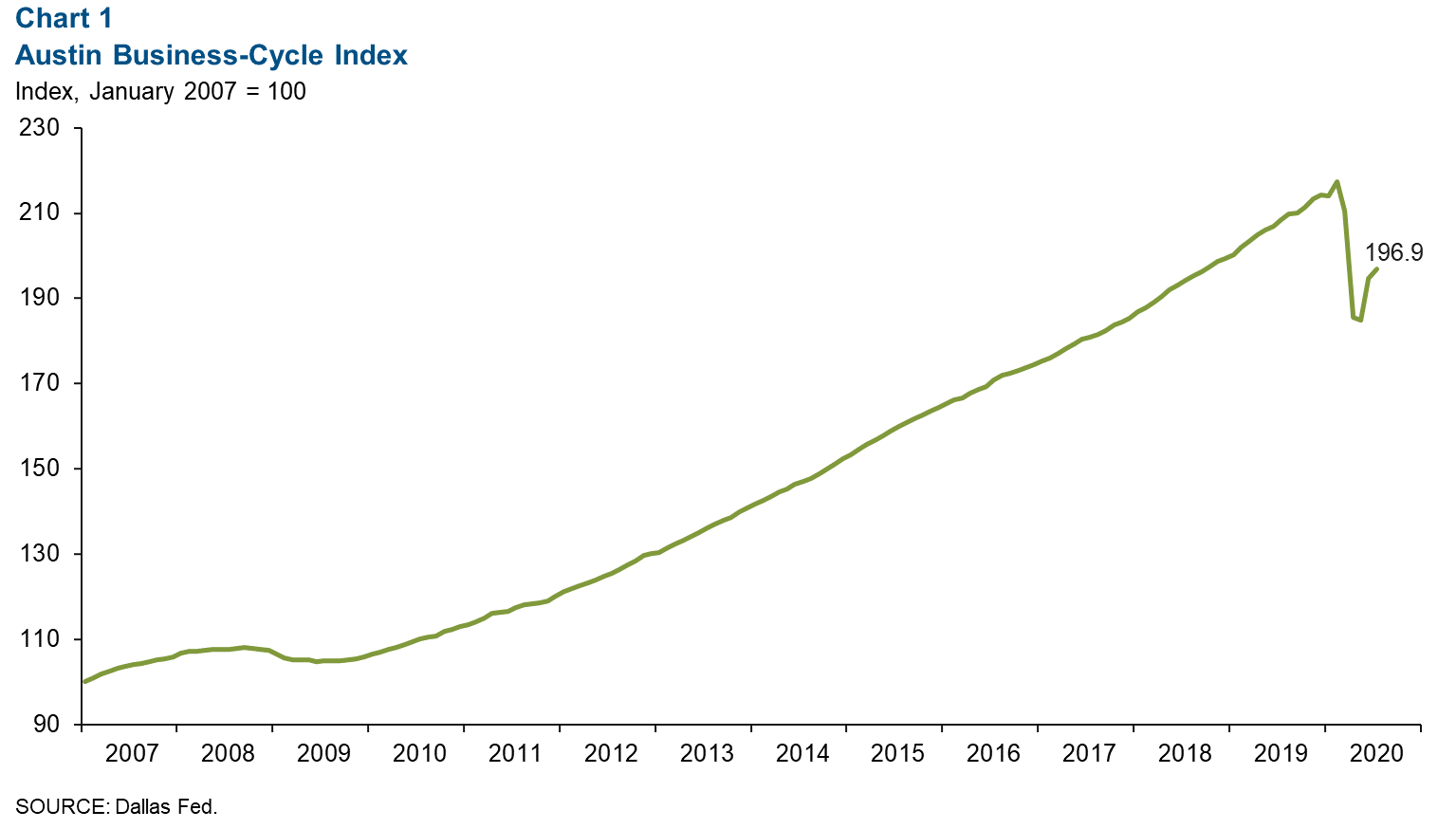
Labor Market
Unemployment Rate Falls
Austin’s unemployment rate dropped to a still-elevated 5.9 percent in July (Chart 2). The jobless rate ticked down to 8.0 percent and 10.2 percent in Texas and the U.S., respectively.
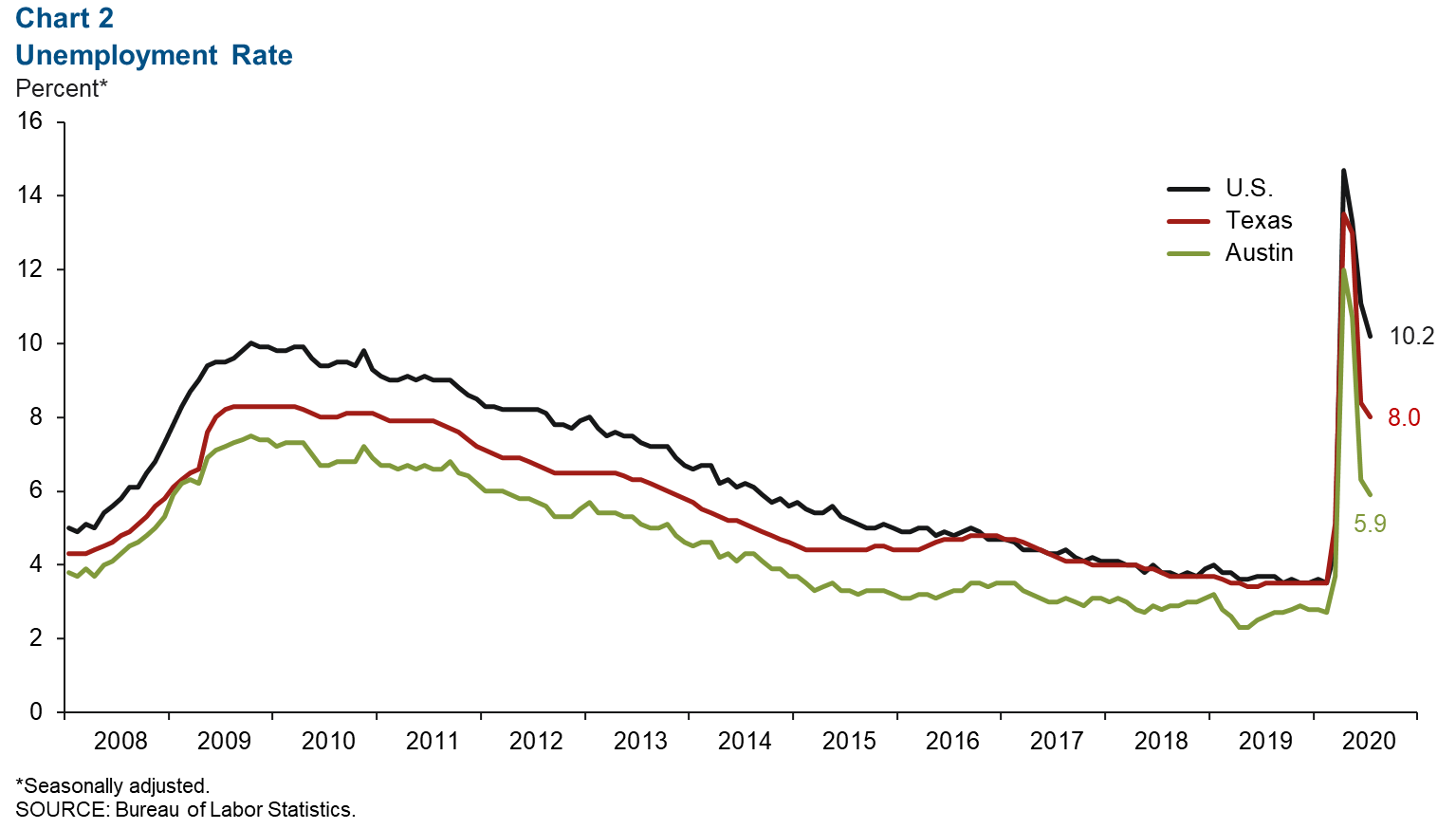
Most Sectors Post Job Gains
Austin payrolls expanded 6.1 percent (nonannualized), or 62,000 net jobs, in the three months ending in July (Chart 3). Leisure and hospitality posted the largest upturn at 42.6 percent or 30,400 jobs.
This was followed by other services (28.3 percent, or 9,200 jobs), health and private education services (8.6 percent, or 9,840 jobs) and trade, transportation, and utilities (5.2 percent, or 9,050 jobs).
Sectors that experienced payroll contractions were information (-3.0 percent, or 1,060 jobs) and construction and mining (-2.0 percent, or 1,420 jobs).
Manufacturing and financial activities were the only sectors to post positive job growth for the first seven months of the year.
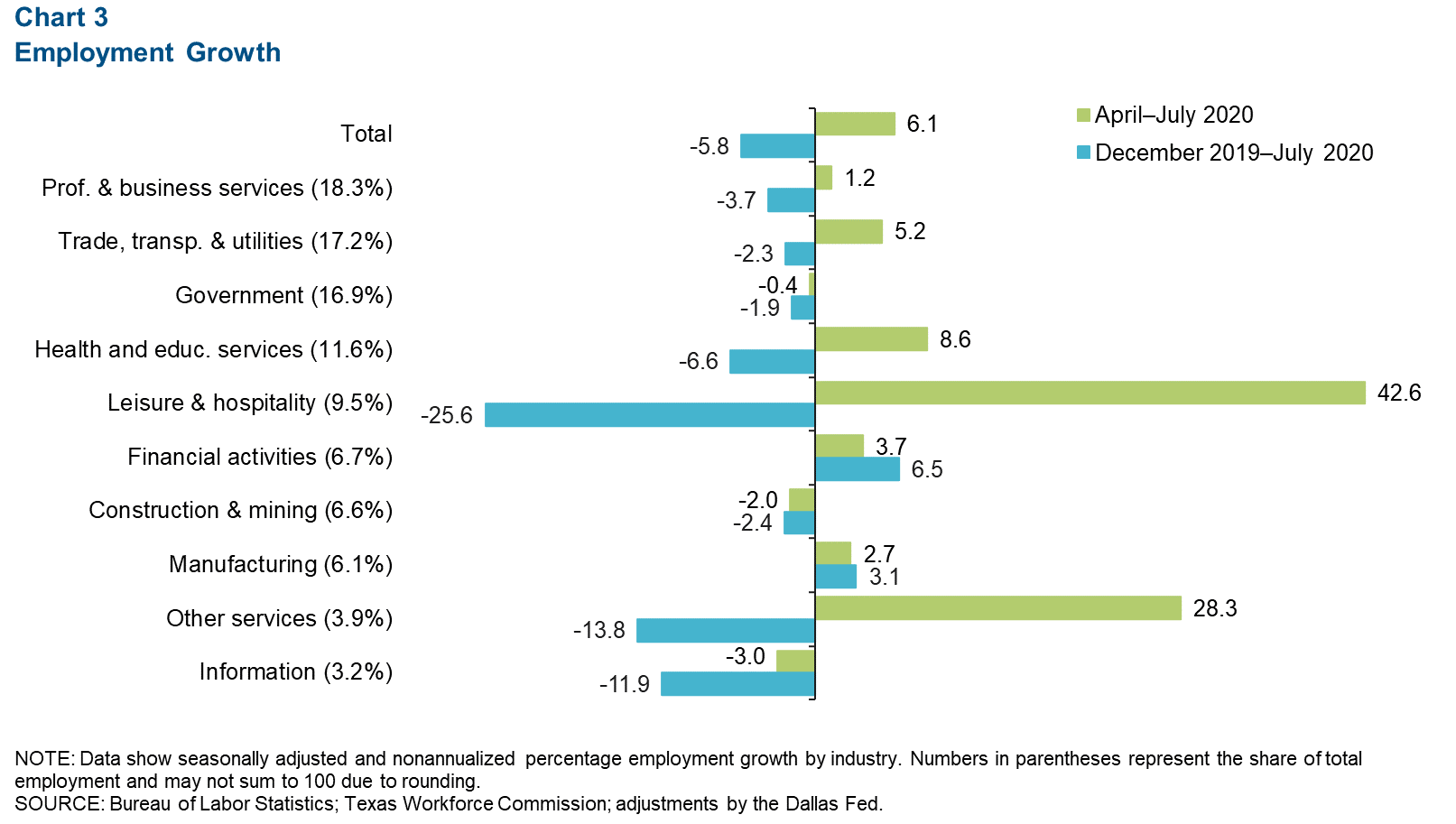
Consumer Spending
Since mid-July, consumer spending (measured by credit and debit card spending) in Travis County has remained above January levels.
As of Aug. 16, spending in the county was up 7.9 percent relative to January 2020, whereas spending in Texas was up 1.4 percent over the same period (Chart 4).
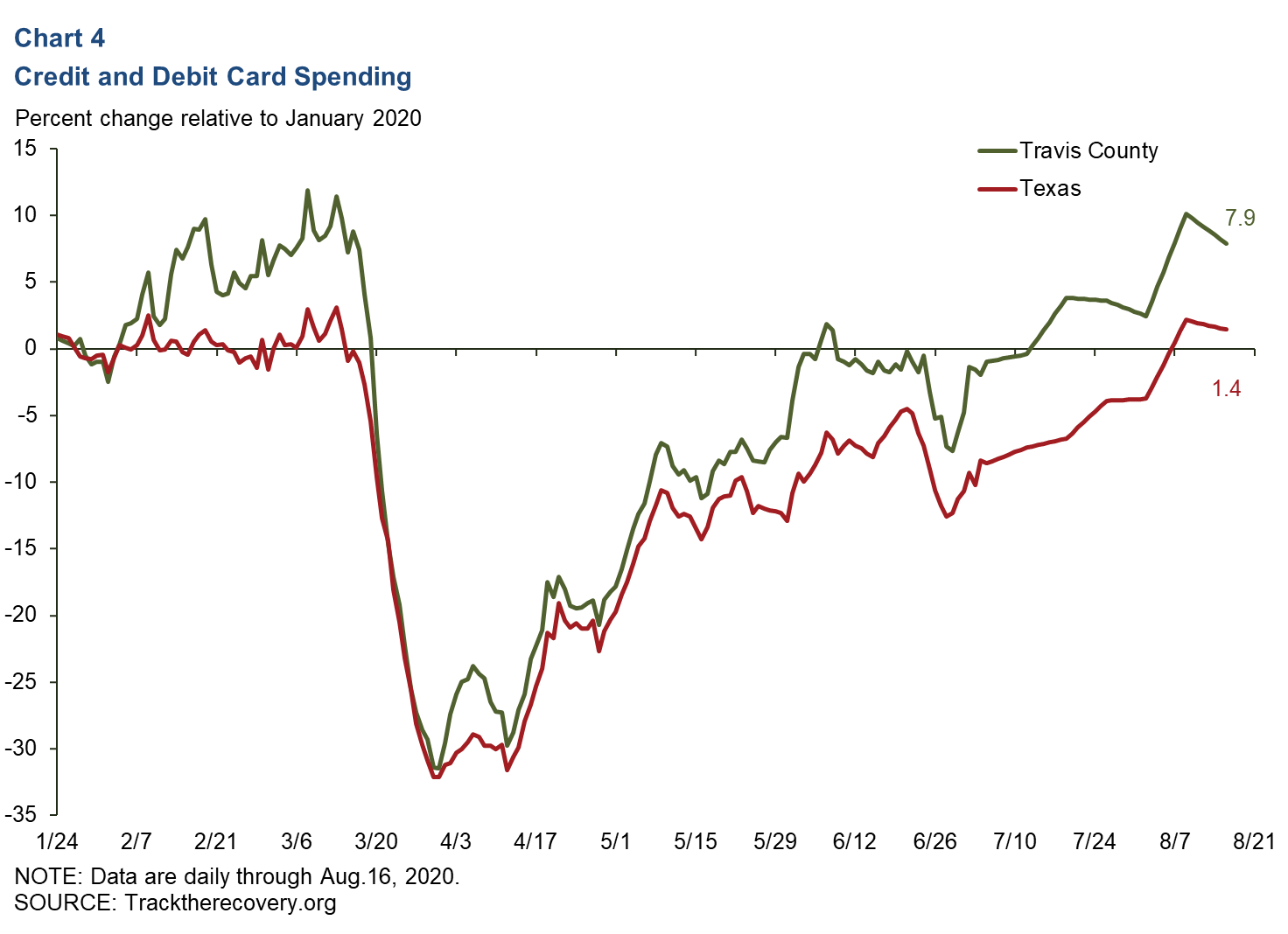
Real Estate
Home Sales Remain Strong
Existing-home sales in July climbed 17.7 percent in Austin and 14.1 percent in the state (Chart 5). However, the metro’s home sales contracted a slight 0.2 percent during the first seven months of the year relative to the same period in 2019; however, Texas sales climbed 1.6 percent.
The median price of homes sold in July was $344,760 in the metro, an 8.9 percent rise year over year, compared with $261,568 in Texas, an 8.2 percent gain.
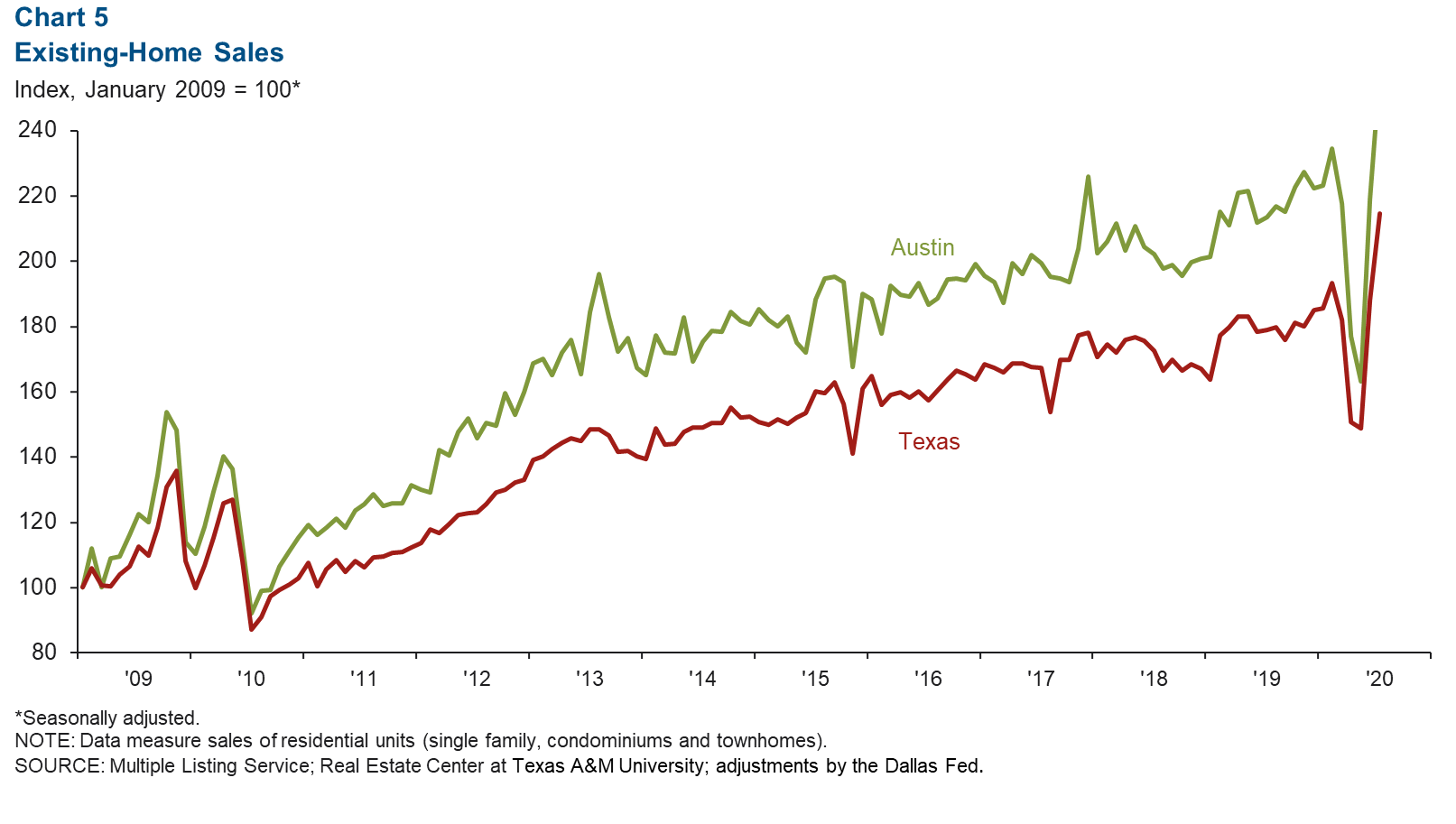
Home Construction Permits Rebound
From June to July, the five-month moving average of total housing (single-family and multifamily) permits grew 1.7 percent in Austin and 3.1 percent in the state (Chart 6).
Austin’s existing-home inventories ticked down to 1.5 months, remaining well below the six months of supply considered to be a balanced market.
